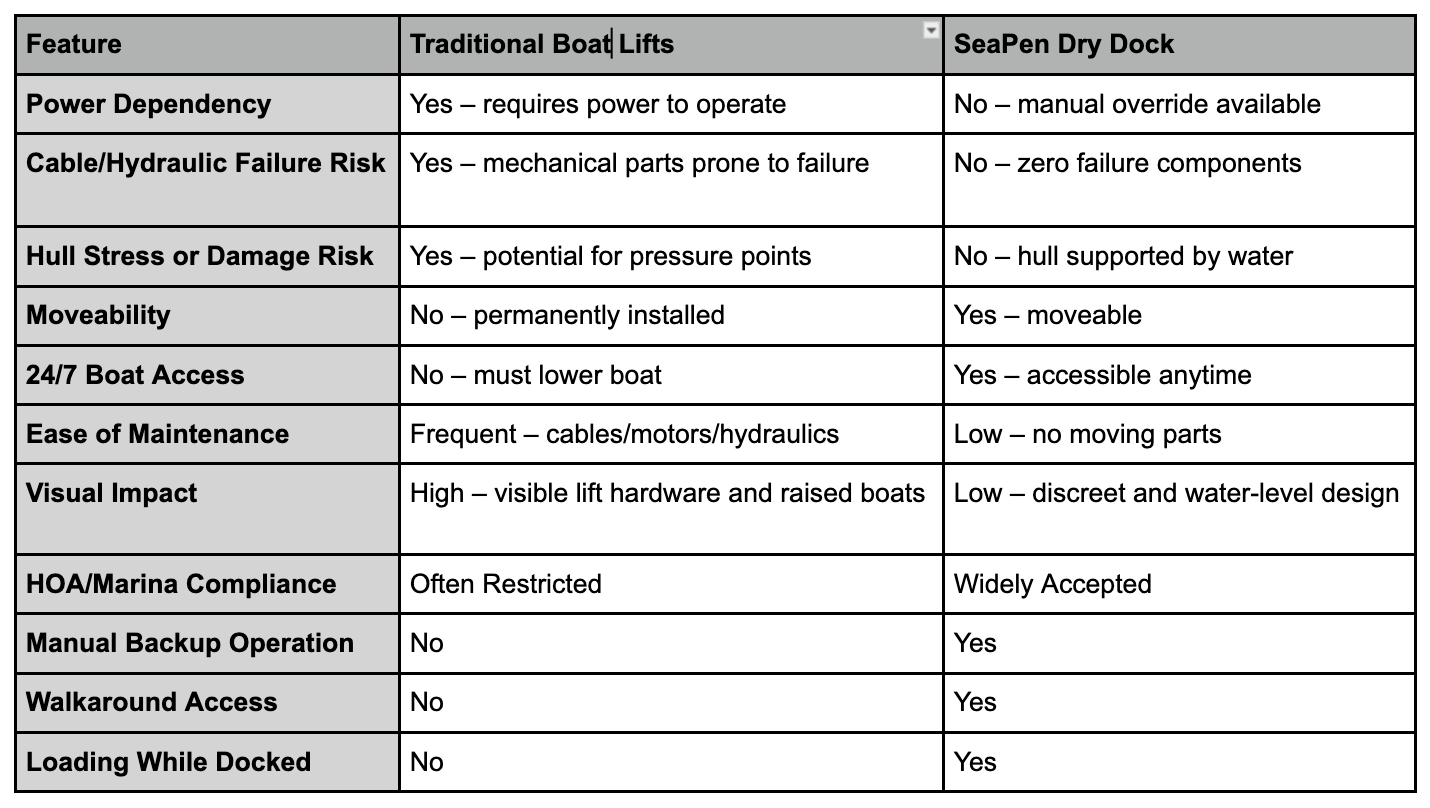Understanding Traditional Boat Lift Limitations
A Comparison to Solstice SeaPen Dry Docking
Traditional boat lifts have long been used to keep vessels out of the water, reducing marine growth and protecting hulls. While effective in many settings, they come with limitations that may not suit every boater or marina. As docking technology evolves, innovations like the SeaPen offer an alternative approach with added flexibility and ease of use. Below, we explore some of the key limitations of traditional lifts—and how SeaPen offers solutions to meet modern boating needs.
Dependence on Power
Traditional lifts rely entirely on electricity. During power outages, you may be unable to launch or retrieve your boat—a serious concern during storm prep or emergencies. Solstice SeaPen includes manual overrides for continuous operation, even without power.
Vulnerability to Cable Failure
Lifts operate using cables, which are subject to wear and tear. If a cable breaks, the lift becomes inoperable and may pose a safety risk. Solstice SeaPen’s design avoids moving mechanical parts like cables or hydraulics, reducing maintenance and failure points.
Potential Hull Damage
Traditional lifts can place uneven pressure on the hull, especially if not aligned perfectly. Over time, this can lead to stress cracks, scratches, or dents. Solstice SeaPen keeps the hull supported by water, preventing concentrated pressure points.
Lack of Moveability
Boat lifts are often fixed structures that are hard to relocate or resell. Solstice SeaPen, by contrast, is a moveable dry-docking solution that can be relocated to another slip or marina.
Restricted Boat Access
With most lifts, the boat must be lowered to access it for cleaning, maintenance, or loading. The Solstice SeaPen offers 24/7 access from all sides—no need to lower the boat for simple tasks.
Limited Functionality for Entertaining or Loading
Boaters using traditional lifts often find that hosting guests or preparing the boat for a trip is cumbersome. The boat must be lowered first, making spontaneous use more difficult. Solstice SeaPen allows full walkaround access at any time, making the boat usable even while docked.
Visual and Regulatory Considerations
Some waterfront properties, HOAs, and marinas consider boat lifts unsightly and may restrict their use. Because Solstice SeaPen floats at water level and requires no large structures, it preserves the view and is often accepted in locations where lifts are not.
Higher Maintenance Requirements
Lifts require periodic service—greasing cables, replacing motors, fixing hydraulics. Over time, these costs add up. Solstice SeaPen’s simplified, low-maintenance design helps reduce time and cost spent on upkeep.
Final Thoughts
While traditional lifts serve many boaters well, they’re not always the best fit—especially for those prioritizing access, safety, and simplicity. The Solstice SeaPen Dry Dock offers a forward-thinking alternative that solves many common challenges while maintaining a clean, user-friendly experience at the dock.

